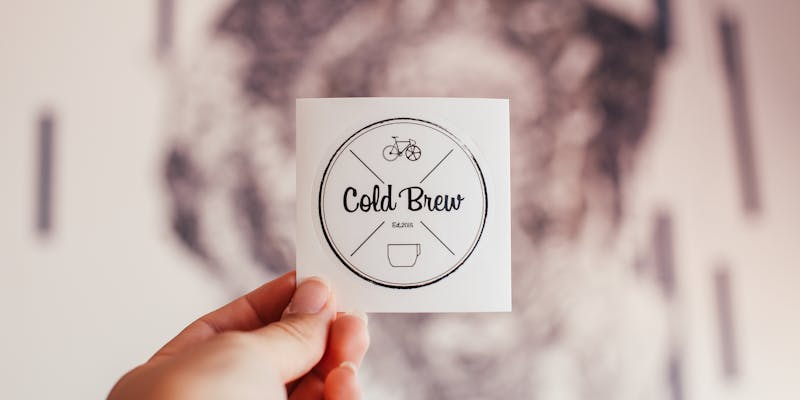Mastering Logo Design: A Beginner's Guide to Creating Stunning Logos
Are you ready to dive into the exciting world of logo design? Whether you're a complete beginner or looking to enhance your skills, this blog post is your ultimate guide to mastering the art of creating stunning logos. We'll start by breaking down the basics of logo design, providing you with a solid foundation to build upon. Then, we'll explore the essential tools and techniques that every beginner in logo design should know to bring their creative visions to life.
But that's not all - we'll walk you through a step-by-step guide to crafting your very first logo, empowering you to apply your newfound knowledge in a practical way. Along the journey, we'll also highlight common mistakes to avoid, ensuring that you steer clear of pitfalls that may hinder your design process. And to keep your creativity flowing, we'll share valuable tips for navigating the creative process, equipping you with the insights needed to produce logos that truly stand out. Get ready to unleash your creativity and transform your design skills with our comprehensive beginner's guide to logo design

Understanding the Basics of Logo Design for Beginners
Understanding the Basics of Logo Design for Beginners
Embarking on the journey of logo design as a beginner can be both exciting and overwhelming. To ease into this creative process, it's essential to grasp the fundamental principles that underpin effective logo design.
One of the crucial aspects of logo design is simplicity. A beginner might be tempted to incorporate elaborate graphics and intricate details in a logo to make it stand out. However, the most successful logos are often the simplest ones. Think of iconic logos like Apple or Nike - they are clean, minimalist, and instantly recognizable. As a beginner, focusing on creating a clean and uncomplicated design will set a strong foundation for your logo-making endeavors.
Another key consideration for beginners is the choice of colors and typography. Understanding the psychology of colors and the impact of different fonts on a logo is essential. Colors evoke emotions and convey messages, so it's vital to select a color palette that aligns with the brand's personality and target audience. Similarly, the right typography can enhance the logo's readability and convey the brand's tone effectively.
Furthermore, scalability is a crucial factor in logo design that beginners should pay attention to. A logo should look equally good whether it's displayed on a large billboard or a small business card. Keeping the design simple and avoiding intricate details will ensure that the logo remains visually appealing across different sizes and mediums.
Lastly, as a beginner, seeking inspiration from successful logos and practicing regularly are keys to honing your logo design skills. Analyze renowned logos to understand why they work and try to incorporate those principles into your designs. Experiment with different concepts, explore various design tools, and don't be afraid to make mistakes. Logo design is a creative process that requires practice and iteration, so embrace the learning journey wholeheartedly.
By grasping these fundamental aspects of logo design and continuously refining your skills, you'll be well on your way to creating stunning logos that effectively communicate the essence of a brand. Remember, mastering logo design takes time and dedication, but with a solid grasp of the basics, beginners can embark on this creative endeavor with confidence and enthusiasm
Essential Tools and Techniques for Beginners in Logo Design
Essential Tools and Techniques for Beginners in Logo Design
When diving into the world of logo design as a beginner, it's crucial to arm yourself with the right tools and techniques to bring your creative vision to life. Here are some essential tools and techniques that can help beginners in logo design create stunning logos:
1. **Sketching and Brainstorming**: Before turning to digital tools, start with pen and paper. Sketching allows you to quickly explore ideas and concepts without the constraints of software. Brainstorming different concepts helps you to generate a wide range of ideas before narrowing down to the best one.
2. **Adobe Illustrator**: Adobe Illustrator is a powerful tool used by professional designers for creating vector graphics. As a beginner, familiarizing yourself with Illustrator can significantly enhance your logo design capabilities. There are plenty of online tutorials and resources available to help you get started.
3. **Understanding Color Theory**: Colors play a crucial role in logo design as they evoke emotions and convey messages. Study color theory to understand the psychology behind different colors and how they can be used effectively in logos.
4. **Typography**: Choosing the right font is essential for creating a visually appealing and memorable logo. Experiment with different typefaces and learn how font styles can influence the overall look and feel of your design.
5. **Negative Space**: Mastering the use of negative space can add depth and creativity to your logos. Understanding how to manipulate negative space can lead to clever and impactful logo designs.
6. **Simplicity and Versatility**: Keep your logos simple and versatile. A successful logo should be easily recognizable and scalable across different mediums. Avoid cluttering your design with unnecessary elements.
7. **Feedback and Iteration**: Don't be afraid to seek feedback from peers or mentors. Constructive criticism can help you improve your designs and grow as a designer. Iteration is also key – continue refining your logo until you're satisfied with the final result.
By incorporating these essential tools and techniques into your logo design process, beginners can set a solid foundation for creating stunning and impactful logos. Remember, practice makes perfect, so keep experimenting and honing your skills to master the art of logo design
Step-by-Step Guide to Crafting Your First Logo as a Beginner
Step-by-Step Guide to Crafting Your First Logo as a Beginner
Designing your first logo as a beginner can feel like a daunting task, but with the right approach and guidance, you can craft a stunning emblem that effectively represents a brand or concept. To kickstart your logo design journey, it's essential to begin with a clear understanding of the brand or message you're trying to convey. Take the time to research the company or individual the logo is for, their values, target audience, and overall aesthetic preferences to ensure that your design aligns with their vision.
Once you have a solid grasp of the brand identity, start brainstorming and sketching out ideas. Don't be afraid to experiment with different concepts and styles - this is the phase where your creativity can shine. Remember that simplicity is key in logo design, as memorable logos are often the most straightforward and easily recognizable.
After you've generated a few rough concepts, it's time to move to the digital realm. Utilize design software such as Adobe Illustrator or Canva to bring your ideas to life. Pay attention to factors like color theory, typography, and scalability to ensure that your logo looks great across various platforms and sizes.
Feedback is crucial in the design process, especially as a beginner. Don't hesitate to seek input from peers, mentors, or even the client themselves. Constructive criticism can help you refine your design and make necessary adjustments to create a logo that truly resonates with its intended audience.
Lastly, remember that practice makes perfect. Logo design is a skill that improves with time and experience, so don't get discouraged if your first attempts aren't flawless. Keep experimenting, learning from your mistakes, and refining your techniques, and you'll soon be on your way to mastering the art of logo design as a beginner

Common Mistakes to Avoid in Beginner Logo Design
Common Mistakes to Avoid in Beginner Logo Design
When diving into the world of logo design as a beginner, it's important to be aware of common pitfalls that can hinder the creation of a successful and visually appealing logo. Here are some key mistakes to avoid:
1. **Overcomplicating the Design**: Simple logos are often the most memorable and versatile. Beginners may fall into the trap of adding too many elements, leading to a cluttered and confusing design. Keeping it clean and minimal can make a stronger impact.
2. **Ignoring Scalability**: A logo should look good whether it's displayed on a tiny business card or a massive billboard. Failing to consider scalability can result in a logo that loses its effectiveness when resized. Always test your design at different sizes to ensure clarity and readability.
3. **Lack of Originality**: While it's tempting to look to existing logos for inspiration, copying or heavily referencing another design can harm your brand's credibility. Aim to create a unique and innovative logo that effectively represents the values and identity of the company or brand.
4. **Poor Font Choices**: Typography plays a crucial role in logo design. Beginners sometimes overlook the importance of selecting the right fonts that complement the overall design. Avoid using trendy or overly complex fonts that may become dated quickly. Instead, opt for timeless and legible typefaces.
5. **Color Clashes**: Colors evoke emotion and convey messages, making them a vital aspect of logo design. Beginners might struggle with color selection, leading to combinations that clash or lack harmony. Understanding color theory and the psychology of different hues can help in creating a visually cohesive and impactful logo.
6. **Inadequate Research**: Before putting pen to paper (or cursor to screen), it's essential to conduct thorough research into the brand, its target audience, and competitors. Neglecting this step can result in a logo that fails to resonate with the intended demographic or lacks differentiation in a crowded market.
By being mindful of these common mistakes and taking the time to refine your skills through practice and learning, beginners can elevate their logo design capabilities and create visually stunning and impactful logos that leave a lasting impression
Navigating the Creative Process in Beginner Logo Design
Navigating the Creative Process in Beginner Logo Design
Understanding the Creative Process in Beginner Logo Design
Embarking on the journey of creating a logo as a beginner can be an exciting yet daunting task. Navigating the creative process is crucial to ensure that your logo not only looks visually appealing but also effectively communicates the intended message to your audience.
One essential aspect of beginner logo design is conducting thorough research. Before putting pen to paper, take the time to understand the brand you are designing for, its values, target audience, and competitors. This research will provide you with valuable insights that will guide your design decisions and help you create a logo that resonates with the brand's identity.
Once you have a solid understanding of the brand, it's time to brainstorm and sketch out your ideas. Don't hold back during this phase - let your creativity flow freely. Experiment with different concepts, shapes, colors, and fonts to explore various design possibilities. Remember, the goal is to generate a wide range of ideas before narrowing down the options.
After brainstorming, it's time to refine your concepts and choose the most promising one. Look for ways to simplify and strengthen your design, ensuring that it is versatile and scalable across different mediums. Pay attention to details such as spacing, proportions, and visual balance to create a cohesive and visually appealing logo.
Finally, seek feedback from others to gain fresh perspectives on your design. As a beginner, constructive criticism can help you identify areas for improvement and refine your logo further. Don't be afraid to iterate on your design based on feedback until you are satisfied with the final result.
By understanding and navigating the creative process in beginner logo design, you can create stunning logos that effectively represent a brand and leave a lasting impression on its audience. Remember, practice makes perfect, so keep designing and experimenting to hone your skills and develop your unique design style